
This Spring has brought new learning about what planetary warming is also about- volatility. We are not in the Pyrenees, but we are very close and that does bring some special characteristics into play, such as swirling rapidly developing storms and some more rain than we had living in Tostat on the plain of the Adour river. But, this year, has been a strange one since the end of March. Up until then, Spring was coming along nicely, plants were doing roughly what they usually do, and if anything, I was hoping that big heat might not arrive until July. Big heat and tiger mosquitoes having dominated from early June until October last year- and perhaps the mosquitoes were the worst bit, being someone who blows up like a balloon once bitten, and reliably, always bitten.
This year, we have had weeks of torrential rain and a very grey Spring since early April. On the whole, setting aside the human frustration, this has been good from a plant point of view, particularly for the newer shrubs in the Barn Garden, which have bashed though with aplomb. From a flowering point of view though, it’s all still waiting to happen really, which seems quite weird after last year’s late Spring and early Summer.
Alchemilla is one of those magical plants that look fabulous after rain. This Alchemilla epipsilla completely vanished last year in our drought and I was doubtful that it would return. But it did. It’s smaller and therefore easier to lose in the underplanting, but every bit as charming as the bigger one. One plant didn’t make it, but this one did, so I think I’ve got it now. Sporting a coronet of diamond raindrops, it is really worth seeking out in the early morning.

This Cistus with the very long name has really thrilled me. It is, believe it or not, a 3 year old cutting from Tostat. It really languished for 2 of it’s 3 years and I despaired, but I planted it on the might-as-well principle, and although it is still so small that I lay down to photograph it, I am sure it will make it now. It isn’t the fastest growing Cistus in town anyway, as I remember having bought it at least 10 years on a trip to the celebrated Pépinière Filippi in Sète, and even in Tostat, it took a while to get going. But the flowers are large, sublime and with the most gorgeous stamens, that I would recommend seeking it out for a hot, dry, spot. The leaves are very fragrant, glossy and almost sticky, another plus.
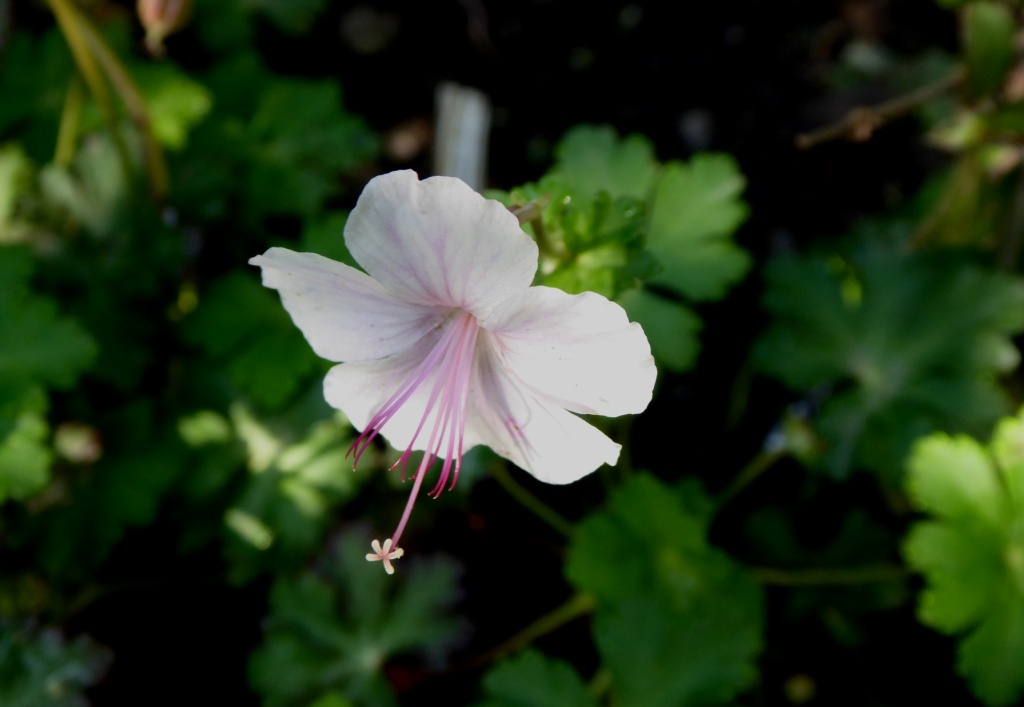
I was a hardy geranium nut when we gardened in Scotland. Tough, cold hardy, flowering reliably, and great ground cover, especially under trees in shade, they were a boon for a time and energy frustrated family gardener. I tried some in Tostat in drier shade situations, but they never made it. This newish variety, bred in Germany, is specially recommended for dry shade, and I liked the pearly pink of the small, but many, flowers. So a couple of plants went in, under the Mahonia ‘Soft Caress’ in the Barn Garden, and enabled me to pull out some more of the Lamium which had gone mad as it does in it’s imperial way. Let’s see how they handle the summer heat.

I have always fancied a Louisiana Iris. I think I am a sucker for something a bit different, and the phrase ‘rarely grown’ is like a red rag to a bull for me. There is often a comeuppance, as I find out why something is ‘rarely grown’! So, I have had several attempts at the Louisiana Iris. When we made the bassin pond out of the old cattle trough, I bought a tiny cutting on ebay, not wanting to risk more money. And this year, it has flowered, and even has a backup bud, so I then had to scrabble to remember which one I had bought. It is a stunner.
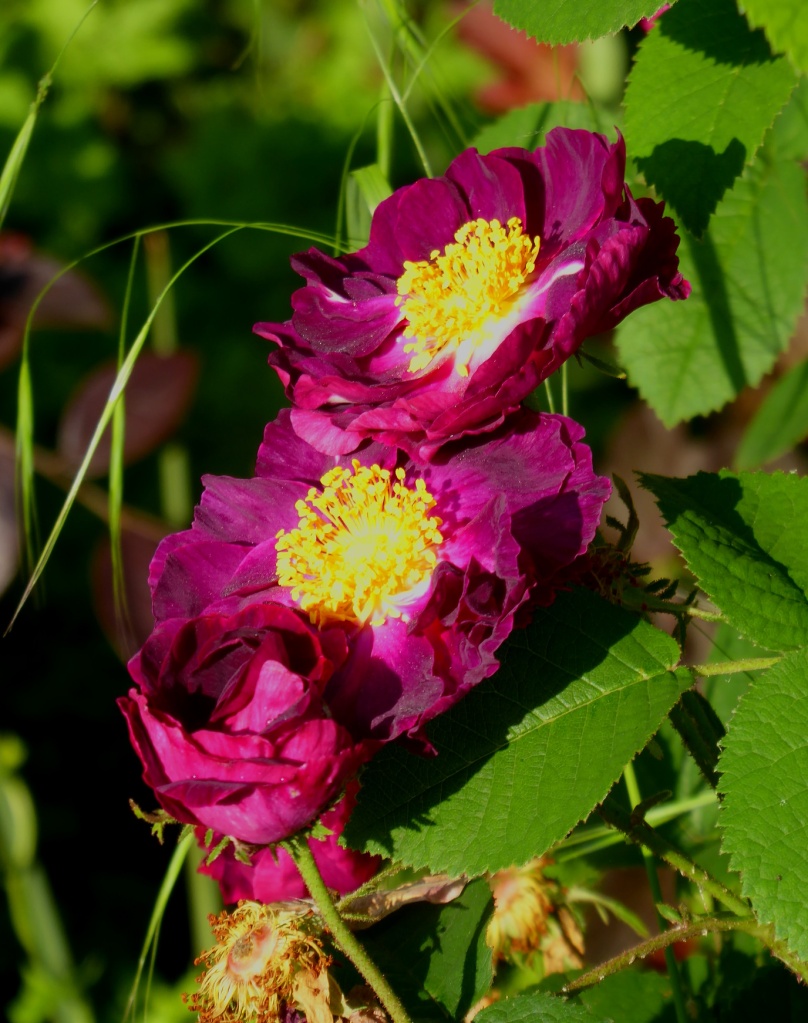
Here’s another ‘rarely-grown’ purchase, which is utterly unjustified in my book. Rosa ‘La Belle Sultane’ has a patchy history in that, apart from being a Gallica, which guarantees toughness, there is very little record of it. Most probably it was bred in the Netherlands at the end of the 18th century. I was drawn to it, full story here, and it’s now in it’s second year. An upright, sturdy rose, which has taken everything that the weather has flung at it, including huge hail the other week, without flinching. The flowers are numerous, with damask colouring and those incredible golden stamens. It should be a world beater this rose.
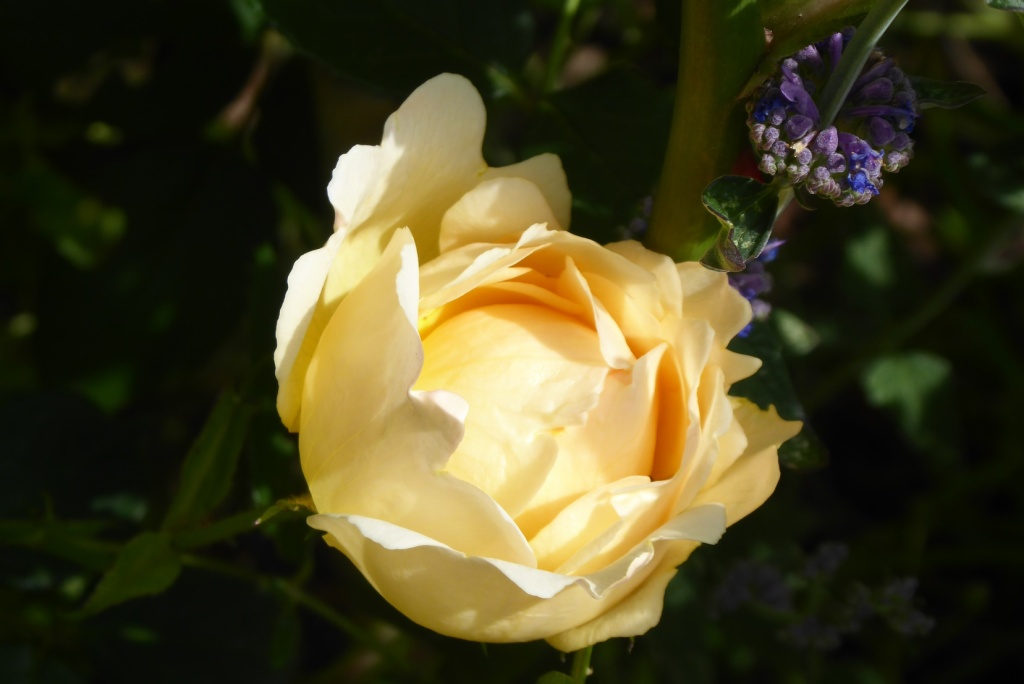
‘Woollerton Old Hall’ has the most extraordinary rose scent that even I can small. Polite reviewers call it ‘myrrh’, which I have never smelled so I wouldn’t know, cloves, pungent, not sweet but still lovely covers it for me. It starts off a gentle gold colour and matures to big blowsy cream flowers. It can be grown as a shrub, but it is pretty lax, and needs more support than we have given it, so next year, the home made bamboo tripod will be erected. Nestling into the picture is a last remaining plant of a great, but floppy, Catmint, Nepeta ‘Zinser’s Giant‘, that I grew from seed in Tostat. Having said floppy, it does a good flop, and you can cut it back after flowering to force it back into new growth. It is pretty obliging really and insects love it.
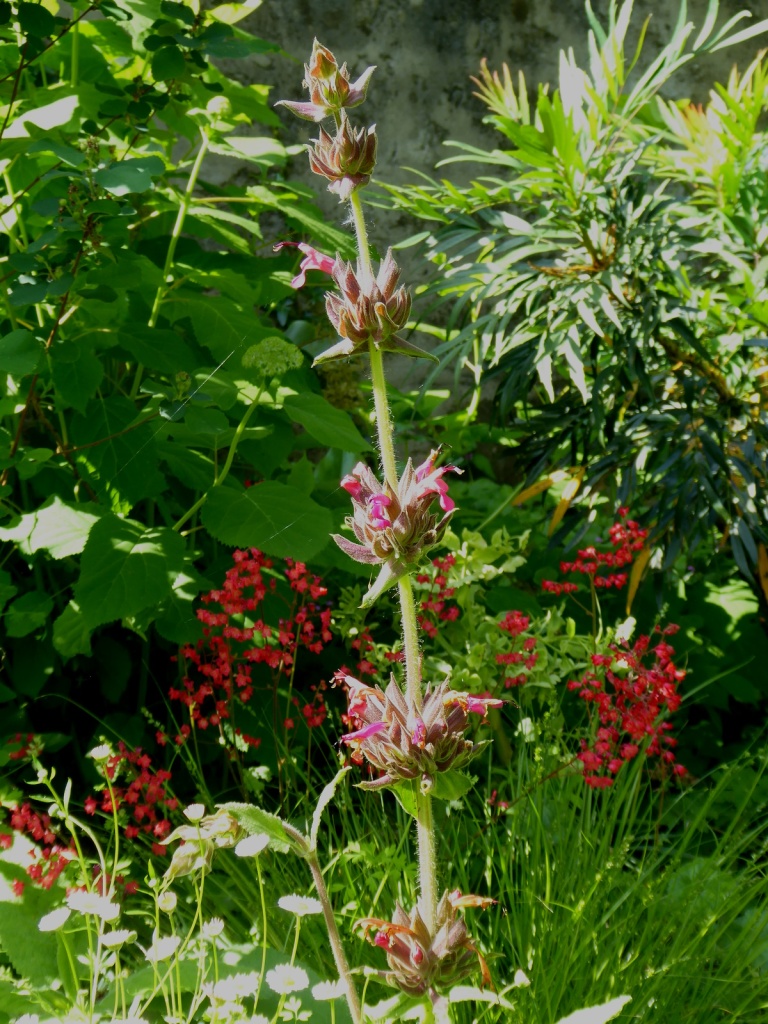
Another Tostat survivor, grown from seed in a hot, dry situation, and now revelling in dryish semi-shade in the undercover of the Amelanchier in the Barn Garden is Salvia spathacea. It is a creeping plant, spreading underground slowly if it likes where it is. It flowers according to mood, last seen flowering in late November and then again starting out last month. The leaves have a wonderful pineapple-ish smell when brushed against. In Tostat, it grew to almost 2m, and, here in Oloron, it was just over a metre tall before the hail bashed it last week. Behind it, is a last remaining plant of Heuchera ‘Firefly’, that I grew from seed in Tostat. A terrific plant, pretty cream tinged leaves in a scallop shape, and long lasting scarlet sprays of tiny flowers, no trouble and so much reward, working hard as a backing singer to the Salvia.
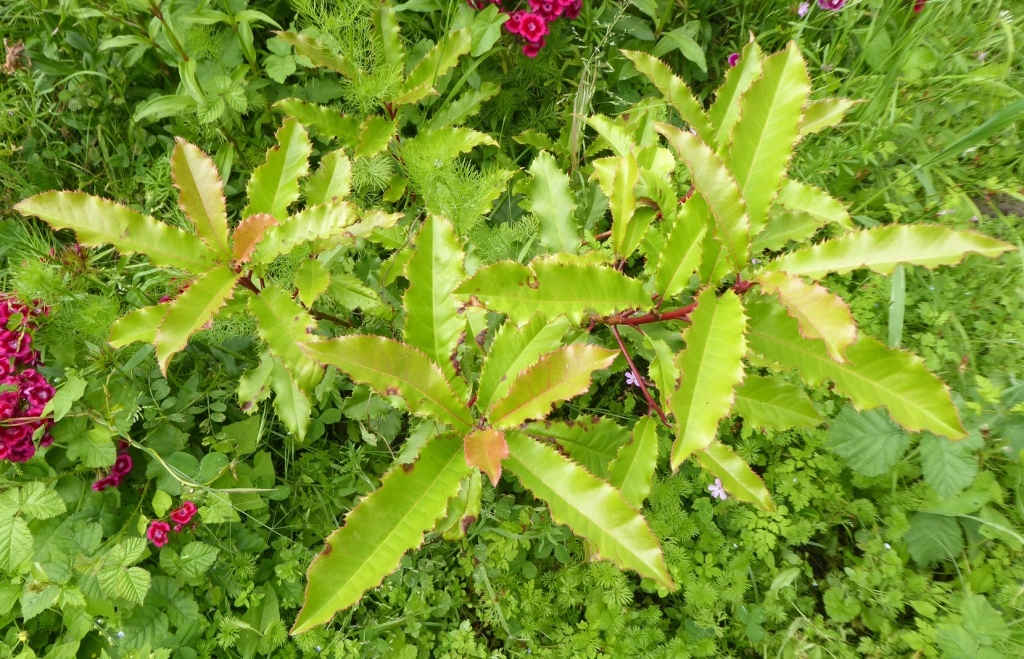
In the 90s in Scotland, every other garden had a Photinia ‘Red Robin’ in it, usually as hedging. Back then, it was a sort of amazing plant because it was so colouful so early in the year. I fell over this new variety, ‘Crunchy’ last year in the catalogue of the remarkable Cathy Portier in Belgium, and having been a complete snob about Photinia, I have been converted. Yes, you get the coral coloured early foliage, but the stems are also coral coloured and the leaves are long, glossy and almost holly-like. It grows obligingly upwards for as long as you want it. I have three in a group in the front garden, nearly under the two old cherry trees, and I love them.
Thank you! I really enjoy your blog 🙂 Jenny from New Zealand
LikeLiked by 1 person
Thank you Jenny, how kind to write! I really write it for myself as a thought crystalliser, so it is really nice when others enjoy it, and say so!
Best wishes
Alison
LikeLike
Louisiana iris is also rarely grown here, but likely because it prefers more moisture. I recently procured ‘Black Gamecock’ from Tangly Cottage Gardening for the edge of a drainage pond at work. It is likely the most popular cultivar. I expect it to be happy around the pond, but not elsewhere. I like ‘Red Velvet Elvis’, but will not likely acquire it now that ‘Black Gamecock’ is here.
LikeLiked by 1 person
Hi Tony
Red Velvet Elvis sounds amazing! Must check it out…All the best, Alison
LikeLike